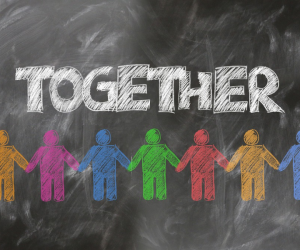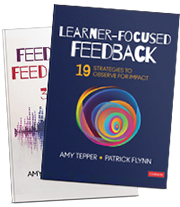Educators are furiously working to finalize reopening plans for different scenarios–imagining how to address everchanging physical and logistical needs. In last month’s blog, we reminded you to find time to “fill your buckets” to ready yourselves to fill others’ buckets when schools reopen. But, this has proven really difficult for many who are now forgoing vacations or attempting to Zoom from mountain or beach locations between family events. At this point, you may feel like you are riding a unicycle juggling bowling pins, a chainsaw, and a chihuahua…in the mountains, in a house, with a mouse.
How did it get so late so soon?
And beyond ensuring safe learning environments and that all students are supported emotionally and physically, you are working toward ensuring all have access to equitable and rigorous learning–and to ensure all teachers are supported to accomplish this. No small task! Instructional leaders must find ways to work efficiently and effectively all year, yet you might be finding that everything is important! Some suggestions:
Process to Plan: As physical/virtual plans are submitted, perhaps you are now shifting to identifying what and how you will offer professional learning and how you will observe and gather information about teaching and learning to provide teachers ongoing feedback. You can begin by asking:
What do students (and families) need to be successful? And then identify:
What barriers can exist or could we create unknowingly that stand in the way of that success?
What are our teachers’ strengths and needs?
Prioritize: Once you unpack these with your team, prioritize, and then align all reflection, goal setting, observation and feedback, PLC work, and professional learning to those priorities.
You can use our 4 stages of the shift to distanced learning models to help you meet learners and teachers where they are in phases based on priorities. We expect all teachers and students will return to our Stage 1 when schools reopen, regardless of how far they progressed in the spring. So, though you will always juggle, this tool can help you come down off that unicycle and stand on steady ground as an instructional leader.
Consider our top priorities for Stage 1 which can become barriers to equitable learning. These may be in direct alignment with the needs you have already identified and the professional learning you are planning:
Just as we begin every school year, teachers must purposefully lay the foundation for deeper engagement and learning and student independence (for movement to our Stages 2, 3, and 4). Tackling our Stage 1 priorities helps to ready students for that learning. The foundation becomes stronger when teachers see the connections between the priorities and how these connect to academic/cognitive learning. Strive to:
- ensure social-emotional learning and trauma-informed teaching don’t become silos but are interconnected with academic learning throughout the year and become a lens through which we view all teaching.
- establish routines, protocols and procedures that serve to support wellness and build relationships, connections, and community and ready students to ultimately engage in rich discourse and collaboration.
You’ve Come To a Place Where the Streets Are Not Marked
And we know you are building the plane as you fly it.
Know Where You Are Headed and Why
By now, you should have a count on the number of students who never engaged in distanced learning, somewhat engaged, and fully engaged. It is time to review your survey data, speak directly with teachers, families, and students and work to create communication systems that will ensure you have (and maintain) an accurate understanding of
- what is happening in homes/for students.
Are parents essential workers? Have students lost someone to COVID-19? Are students sharing devices in a home?
- why students engaged or not (and if anything has changed since the spring)
Which causes are in a teacher’s direct control? (e.g., relationships, relevance, differentiation) Which are not?
- what is happening for teachers
Have teachers lost someone to COVID-19? Are teachers’ children going to be at home?
- which practices and strategies had positive impacts when schools closed on the priorities of Stage 1 so they can be replicated
Find the Pathways and Remove Roadblocks
Once you have a clear picture, start to identify strategies and tools in alignment with identified and prioritized needs and strengths. Consider what protocols, routines, and procedures need to be established. Some examples for Stage 1 include:
| Priorities | Example Barrier | Example Guiding Questions | Example Strategies or Tools |
| SEL | Students feel anxious and stressed by new dynamics in school | How can we measure and support wellness of staff and students? | Use Mood Meter/RULER Build from CASEL Competencies Routines: Wellness check-ins before lessons begin Ts create weekly video messages/confer with students |
| Community | Students don’t feel comfortable sharing in front of peers or feel included | How can we create safe and productive learning environments and communities of learners? | Use Culturally Responsive Teaching Use Flipgrid for Ss to create intro videos to share Routines: Morning Meetings (all grades) Develop protocols like Chalk Talk/ 4 Corners & use fishbowls to teach |
| Communication/ Language | Students (or families) can’t access tasks, directions, or resources | How can we ensure the clarity of communication with all students and families? | Use Google Translate, Immersive Rdr Record audio directions Routines: Use a Bitmoji room as a central location for all communication/ resources |
The barriers, priorities, and strategies are interconnected, so seek powerful multi-purpose solutions like say a Bitmoji room that supports wellbeing and creates opportunities for:
- predictability
- connections and relationships (can look like the classroom or based on the teacher’s personality or interests)
- efficiency (as a one-stop for weekly messages, recorded lessons, resources, and tasks)
- student ownership
You can meaningfully support teaching and learning when school reopens. Process, plan and prioritize (think 30-60-90 days out) and then align your feedback cycles and professional learning to those priorities.
“So be sure when you step, Step with care and great tact. And remember that life’s A Great Balancing Act. And will you succeed? Yes! You will, indeed! (98 and ¾ percent guaranteed) Kid, you’ll move mountains.” – Dr. Seuss
Check out our new On-Demand Webinars and Free Resources for Distanced Learning
Let’s stay connected – Sign up for our mailing list
Twitter: Amy @ATep46 Patrick @ReVISION_Learng
Order our books Feedback to Feed Forward: 31 Strategies to Lead Learning and Learner-Focused Feedback: 19 Strategies to Observe for Impact today!





Leave a Reply